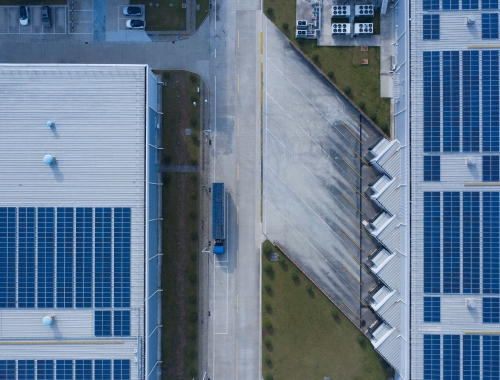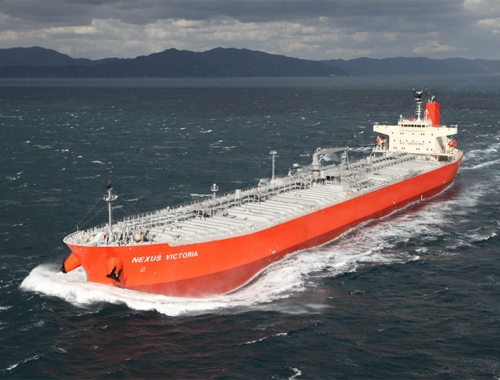Are engine makers putting the cart before the horse?
SUMMARY
Leading marine engine makers and shipyards are eager to tout the readiness of their equipment and vessels to be powered by the new zero-emissions fuels. However, infrastructure gaps mean that the stop-gap solutions being offered may be more complicated than they are touted to be.
By Vincent WeePOSTED IN:
With the rush towards decarbonisation in shipping through the use of low or zero-emission fuels, an important part of the equation is the ability of these new vessels to be powered by the new fuels.
Putting aside LNG and biogas-powered vessels, methanol, ammonia and hydrogen are the fuels seen as holding the most promise for powering vessels. Currently, the means by which this is being done is to use engines which can use the new fuels as well as more conventional fuels.
Dual fuel engines are not new. Manufacturers have been developing them for at least a decade and the technology is relatively advanced.
All the major engine makers such as Wartsila, MAN and WInGD as well Japanese and South Korean conglomerates such as Kawasaki Heavy Industries, Mitsubishi E&S, Hyundai Heavy Industries and their various affiliated shipyards have been working on various iterations of the technology, with each taking their own unique slants to it.
As recently as November 2021 WinGD committed to a firm deadline that its engines will be able to run on methanol and ammonia from 2024 and 2025 respectively.
The reality is deepsea zero-carbon ships must be in service by 2030 if the industry is to have any hope of meeting its decarbonisation commitments. According to Lloyd's Register's Maritime Decarbonisation Hub, an assessment of a container ship route in Southeast Asia has estimated that between 27% to 30% of newbuildings between 2022 and 2050 will require conversion to a different fuel in order to meet zero-carbon targets.
Meanwhile, systems to enable the widespread deployment of these new vessels, which will typically have life spans of up to 30 years, are still not fully ready yet.
As a result, the industry is focusing on building so-called future-fuels ready vessels which essentially feature modular designs that make them retrofittable and able to be upgraded to meet future needs and accept the new fuels when they become more readily available.
According to a Lloyd's Register white paper "the industry now thinks in terms of ‘readiness’, the ability to ensure that a vessel can use zero carbon fuel once this becomes feasible, either by building new vessels that have this capability from the day they are built, or by ensuring existing vessels can be easily converted".
LR notes that marine engine manufacturers are increasingly developing and offering engines of a modular design, that can be retrofitted to run on a different fuel simply by replacing or adding certain parts. The manufacturer typically offers these parts as a retrofit pack which can be purchased at a later date.
However, when they hit the water in the near future, in all likelihood, many of them will continue to use the usual fuels that are the easiest option now as many owners and operators hedge their bets in a chicken and the egg situation with fuel availability.
Here lies the rub. Engine makers say they are trying to offer their clients flexibility as they deal with the decarbonisation conundrum. Owners meanwhile point to the multi-million dollar investments in their vessels to justify the need to keep their options open on fuel choices.
The question is will this act as an impediment to actual decarbonisation efforts or will it incentivise fuel suppliers to speed up efforts to meet demand that they now know is there.
"But there is no common definition of readiness, and it can mean anything from a vessel fully equipped to bunker with alternative fuel today, to a vessel that could potentially be converted from fossil fuel power at some point in the future," LR adds.
The classification society further warns: "Many so-called ‘ready’ vessels will require major retrofit, with significant safety implications and costs that could render the project uneconomic."
LR cited the example of a 15,000-teu LNG-ready container ship retrofitted in 2020 that was believed to have cost around US$30m and taken out of action for over three months.
MAN Energy Solutions says the main cost drivers are the fuel system and its associated equipment which add about 20% to vessel capex for LNG and ammonia and 10% for methanol on a neo-panamax size container vessel.
Nonetheless this has not stopped equipment makers from making their sales pitches. WinGD vice president for Research & Development Dominik Schneiter said: “Our commitment to deliver engine technologies to enable the use of clean fuels by 2025 means that ship owners and operators can already invest in ships that are ready to use ammonia and methanol today, safe in the knowledge that WinGD will have the technologies available to power their vessels reliably, efficiently and cleanly.”
“We are developing engine technology that will power the industry for years to come," said Wärtsilä Marine Power Norway sales head Cato Esperø. The company said it successfully ran an engine on 70% ammonia in 2021 and in 2022 launched its first newbuild methanol engine.
Wartsila is also leading a consortium developing two-stroke and four-stroke ammonia-fuelled engines, the Ammonia 2-4 project.
Along with naval architects C-Job, classification society DNV, ship owner MSC and the National Research Council of Italy, it aims to develop safe concepts for the handling and use of ammonia as a marine fuel.
“Ammonia is one of main candidates in shipping’s search for future fuels,” said Wärtsilä Marine Power general manager for Research Coordination & Funding Sebastiaan Bleuanus. The company said it will have a concept running on pure ammonia by 2023.
The project's objectives include a lab-based demonstrator for a four-stroke ammonia engine, and a lab-based test engine followed by a vessel retrofit for a two-stroke version by 2025.
"We are currently developing large, two-stroke dual-fuel engines running on methanol and ammonia to enable the merchant marine to have net-zero carbon dioxide equivalent emissions operation, seen across the lifecycle of the fuels," said Bjarne Foldager, senior vice president and head of Two-Stroke Business, MAN Energy Solutions.
He noted that the company will deliver the world’s first large-bore methanol engine for a ship later in 2023 and the first ammonia engine in late-2024 or early-2025, with safety being a particular focus for the latter.
In November 2022, MAN Energy Solutions announced that its portfolio of two-stroke, dual-fuel engines had passed more than 1,000 units on order or in service. The engines can run on a variety of alternative fuels, including LNG, methanol, ethane and LPG.
The company expects that 50% of all newbuildings will be dual-fuel powered and more than 60% of new engines will be dual-fuelled by 2026.
Leading industry players in South Korea and Japan have also jumped into the fray, focussing on other new fuels. In May 2021, Kawasaki Heavy Industries (KHI), Yanmar Power Technology Co and Japan Engine Corporation formed a consortium to pursue joint development of hydrogen-fuelled marine engines for ocean-going and coastal vessels and to establish a world-leading position in hydrogen engine technologies.
KHI will develop medium-speed four-stroke engines. Yanmar will focus on medium and high-speed four-stroke engines while JEC will develop low-speed two-stroke engines. The partners will also develop a hydrogen fuel storage and supply system and aim to bring the engines to market by 2025.
Meanwhile another Japanese consortium comprising major Japanese line K Line and compatriot shipowner NS United as well as trading house Itochu Corp along with Nihon Shipyard and Mitsui E&S Machinery aims to get ammonia-fuelled ships on the market by 2028.
Separately, Mitsui E&S is also working on a project with engine manufacturer MAN and another major Japanese shipping line, Mitsui OSK Lines on ammonia development as well.
This falls in line with Japan’s ambitions to start commercial use of ammonia by this and focus on the use of the fuel to achieve its carbon neutral goals by 2050.
South Korea's Hyundai Heavy Industries’ Engine Machinery Division (EMD) and WinGD and meanwhile announced in June 2022 that they will collaborate on producing WinGD's first ammonia-powered engine by 2025. The project will explore ammonia concepts for both diesel-fuelled WinGD X-type engines and dual-fuel LNG X-DF engines.
EMD president and chief operating officer An Kwang-Hean said: “There is strong market demand for commercialised ammonia-powered vessels in the near future."
There has also been broad support from other industry players. In April 2021, commodities giant and one of the world's biggest charterers of vessels, Trafigura, came in to co-sponsor the development of MAN Energy Solutions' ammonia-fuelled engine.
As highlighted by MAN's Mr Foldager, the fuel-flexible, two-stroke ammonia engine is expected to be commercially available for deepwater cargo vessels by 2024, followed by a retrofit package for existing ships by 2025.
Other projects include WinGD and Belgian shipping and cleantech group CMB.TECH's installation of ammonia dual-fuel X72DF engine on a series of ten 210,000 dwt newcastlemax bulk carriers to be built at Qingdao Beihai Shipbuilding in 2025 and 2026.
Strong support has come from CMB chief executive officer Alexander Saverys, who asserted: “We believe that ammonia is the most promising zero-carbon fuel for deep sea vessels."
He added that CMB's intention is to have dual-fuel ammonia-diesel engines on its dry bulk vessels, container vessels and chemical tankers.
But the company is also developing other technologies for other types of alternative fuels. In October 2022 CMB.TECH joined up with Volvo’s engine maker, Volvo Penta, to speed up the development of dual-fuel hydrogen-powered solutions.
Wärtsilä, which has a long-term strategic cooperation agreement with Chinese shipbuilder Yantai CIMC Raffles aimed at the design and development of future-proof solutions for newbuild vessels, subsequently won its first order for methanol-fuelled engines that will power a new offshore wind installation vessel ordered by Dutch marine construction firm Van Oord due for delivery in 2023.
Engine manufacturers are going all-out to make engines capable of being powered by zero-emissions fuels such as methanol, ammonia and hydrogen in various forms available to owners.
Owners, pressured by a combination of regulations, financiers and public sentiment, have been making tentative orders for these types of vessels. The problem lies in the lagging state of development of the fuel supply and other required infrastructure to enable the smooth trading of these vessels globally.
Until this situation is resolved, owners will hedge their bets with so-called "future-fuel ready" vessels, which may present more problems than promise when their readiness is actually called into action.




